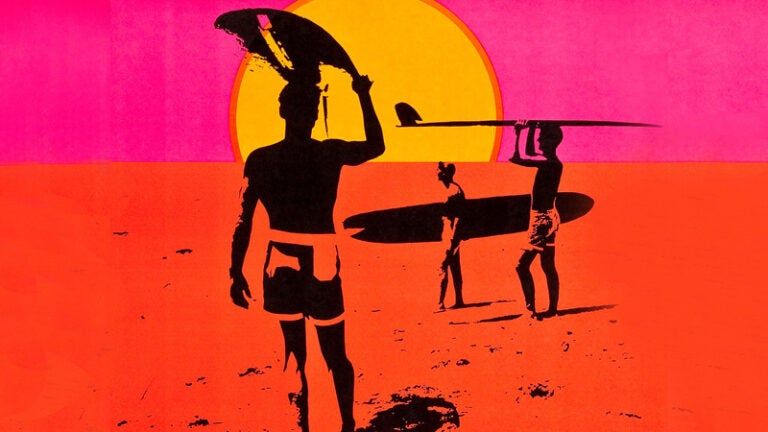
School’s in, surf’s up!
It’s Friday morning at 8 a.m. Class is in session, and Ian Culbertson is explaining how tides work, their relationship to the phases of the moon and the difference in tidal extremes depending on the equator. Students nod along as he spins a model of the moon alongside one of the Earth.
It sounds like a pretty typical day in the classroom. Except this classroom is located in the sand near lifeguard station #24 in Santa Monica, California. Culbertson — an experienced surfer — is wearing a wetsuit and his models of the Earth and moon are a water bottle and a bottle of coconut water.
Offered by USC Dornsife’s Department of Physical Education and Mind Body Health, “Surfing” (PHED 115) enables students to learn the basic skills of Southern California’s most iconic sport. By the end of the course, students will be able to paddle out, stand up on a board and glide along the coast.

Students meet at the beach in Santa Monica, CA to practice on the sand before hitting the waves. (Photo: Margaret Crable.)
On the way to “hanging ten,” students learn the terminology of surfing. The mysteries of “off shore” versus “on shore” wind, the etiquette of catching a wave, wind dynamics, and the history and culture of the sport are all explained, as are the risks. (Pro tip: The most dangerous element in the water isn’t a shark; it’s another surfer’s wayward board.)
They’re also learning resiliency. On one cloudy morning, attendees fought through cold, thumping waves searching for a ride. Boards popped into the air as students were dunked again and again. They crawled out from under the white water, located their board, shook water from their eyes and paddled off for another round.
Culbertson gives his students a pep talk, reminding them of Kathrine Switzer, the first woman to run the Boston Marathon despite physical attacks from the sidelines. “Use the challenges as motivation to get out there and just get a wave,” he says — a lesson that will last long after wetsuits have been hung up to dry.